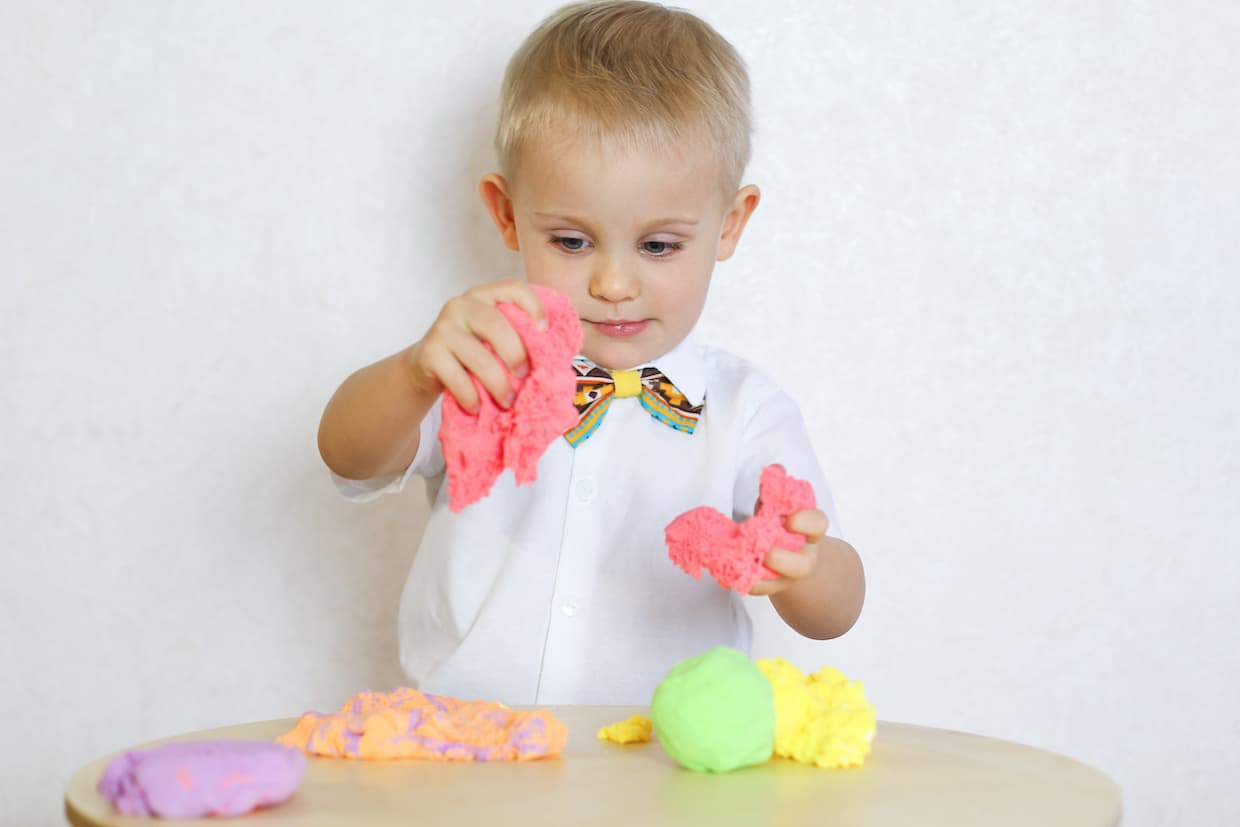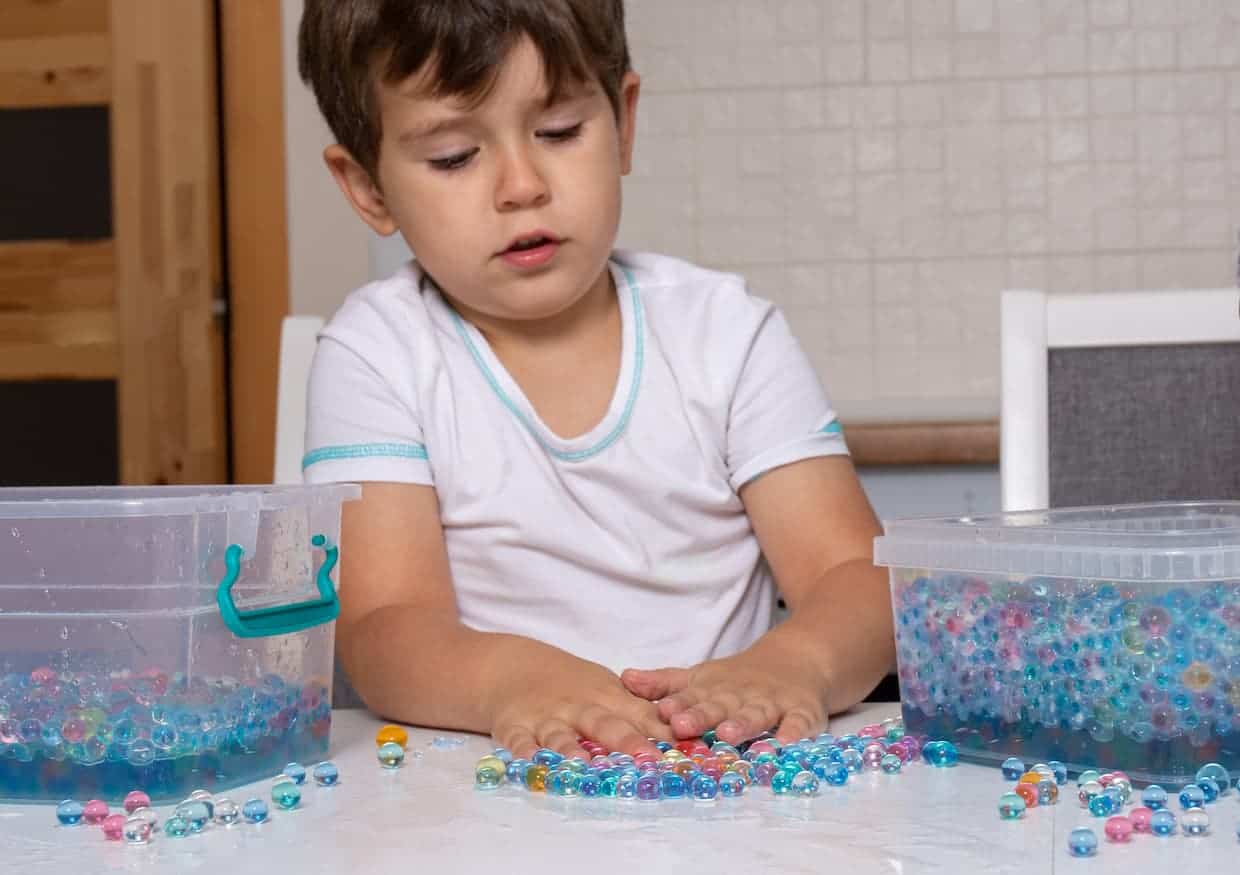Sensory play for kids isn’t something that only needs to be practiced at school. Though learning through the senses comes naturally to kids, parents need to create a favorable environment around the house to encourage sensory play.

Sensory play is important for children for many reasons. It helps to develop fine motor skills, hand-eye coordination and imagination. It also promotes language development, early math skills and scientific exploration. Sensory play can be used to calm a child or to help them focus. Plus, it’s just plain fun.
What is sensory play?
Sensory play is any activity that engages a child’s five senses: touch, smell, taste, sight and hearing. It can be as simple as exploring different textures with their hands, listening to different kinds of music or playing in a sandbox.
The sky is the limit when it comes to planning sensory play activities for your child. Make sure to choose materials that encourage safe play while learning several new things and engaging different senses. Sensory play can differ based on every child’s unique needs, developmental level and how much you are willing to invest in preparation.
Benefits of sensory play
The best way for small kids to learn and explore the world around them is by engaging all of their senses. Thus sensory play is an important part of a child’s development. Some of the benefits of sensory play in the early years include:
- stimulates the brain,
- promotes language skills,
- boosts creativity,
- supports emotional development,
- builds social skills,
- aids in enhancing memory,
- provides an opportunity for problem-solving,
- helps with focus,
- raises surrounding awareness,
- brings comfort,
- develops fine motor skills,
- makes learning fun.
How to set up sensory play
Parents often dread sensory play because it can get, well, messy. But with all of its benefits, it’s crucial to provide plenty of opportunities for hands-on sensory activities. You just need to set up a place where you can manage the mess. Choose a place where you are least likely to get stressed when something spills or a mess is made.
The backyard or balcony is the best place for sensory play, of course. All the sand, hand painting and shaving cream art is easy to wash off with the hose if the play happens outdoors. The second best option is the bathtub. Let your child play with washable bathtub paint, shaving foam and water cups.

Other places to consider are the kitchen floor and dining room table. Or you could simply use a plastic mat and easel that are brought out as needed. Think about what works for you in terms of your sanity.
“When my son was younger, we always had a sensory bin that we ‘made’ him play with daily. It was easy to find a plastic 64-quart tote that sealed well to ensure it didn’t spill. We filled it with white rice and put his favorite small toys, everything from his Thomas trains to little squish balls to jacks. A variety of shapes and textures is important, but you have to find the objects your kid wants to play with, so each sensory bin should look different.”
— Michelle Price, Honest and Truly
Sensory play activity ideas to try
If you’re looking for ways to engage your child in sensory play, there are many easy and affordable activities you can do at home. Here are a few ideas:
Set up a sensory bin
Have your child reap all the benefits of sensory play by setting up a sensory bin. You can use a sensory play table or a large plastic bin. There are many materials you can fill the bin with such as sand, rice, beans, flour or water beads, to name a few. For a more cost-effective option use anything found in nature like rocks, twigs, mud, pebbles or just water. Add some small animal toys, cups and spoons or containers of different sizes.

For babies and toddlers who still mouth everything new they come across you can make edible sand. Just blend a box of Cheerios or crackers in a blender and add the powder to the bin. Throw in some sand toys. Viola. Now your toddler can mouth the edible sand and work on sensory taste stimulation, too.
“I make sensory bins for my toddler often using dried beans. It’s a simple and engaging tactile experience for her. I choose a variety of beans with different textures, colors, shapes and sizes. These bins always provide endless hours of play and encourage imaginative exploration.”
— Sara Nelson, Real Balanced
Make homemade sensory bottles
Fill transparent plastic bottles with different materials such as water, glitter and food coloring. These can be used to explore light and sound and are ideal for baby sensory play.
Let your child play with food
Most babies and toddlers love getting messy with their food. It lets them explore different textures and tastes with foods like mashed potatoes, yogurt or pudding. Plus, they are more willing to try new flavors when the food is presented in the way of play. Choose a good baby-led weaning high chair and cleaning all the mess after your little one’s experiments with food would be so much easier.
Make homemade musical instruments
Use empty containers and wooden spoons to make shakers, drums and xylophones. This is a great way for babies to develop their sense of hearing. They can also learn about cause and effect by seeing how their actions make the instrument produce sound.
Get muddy in the garden
Plant seeds with your child, water the soil, let her get muddy and watch seeds grow day after day. Start an herb garden and along with your little one enjoying the play in the garden, you’ll have a constant fresh supply of homegrown herbs. Plus, it can be a great family bonding time if other family members get involved too.
One last thing
The importance of sensory play for children is indisputable. These are just a few ideas for sensory play activities. But there are endless possibilities when it comes to raising your little one’s sensory awareness.
Even with little or zero budget to spend, you can always make sensory play happen with what you already have at home. This is how your child will train his senses from early childhood and learn a great deal while having fun.
Tamara is a blogger at Thriving In Parenting, where she shares simple tips for a more organized and aesthetically pleasing home, self-care for moms and all things P A R E N T I N G.
This article originally appeared on Thriving In Parenting.